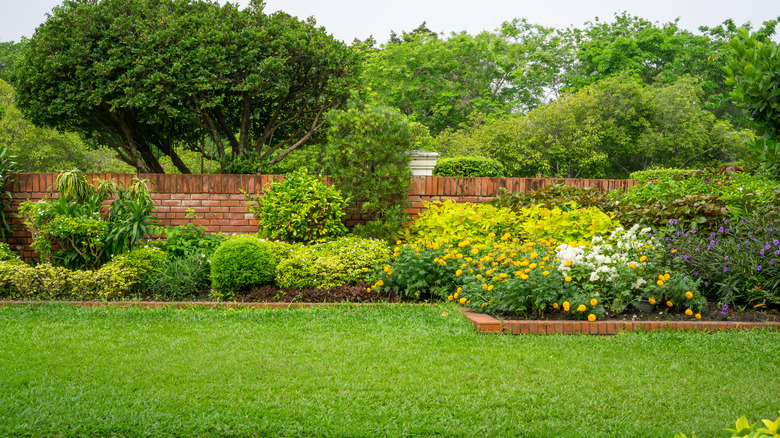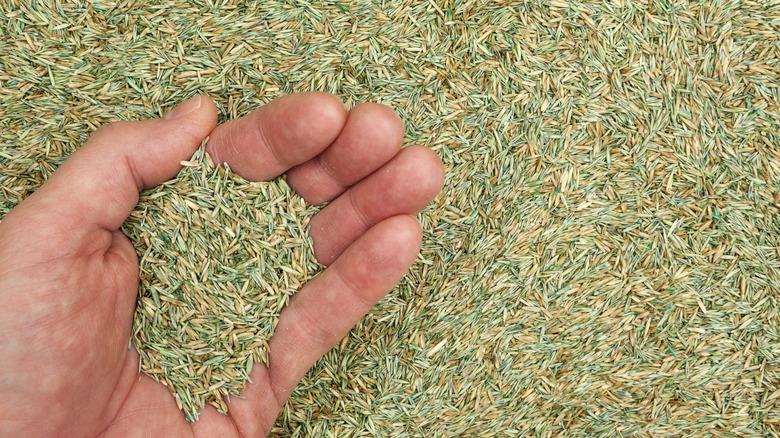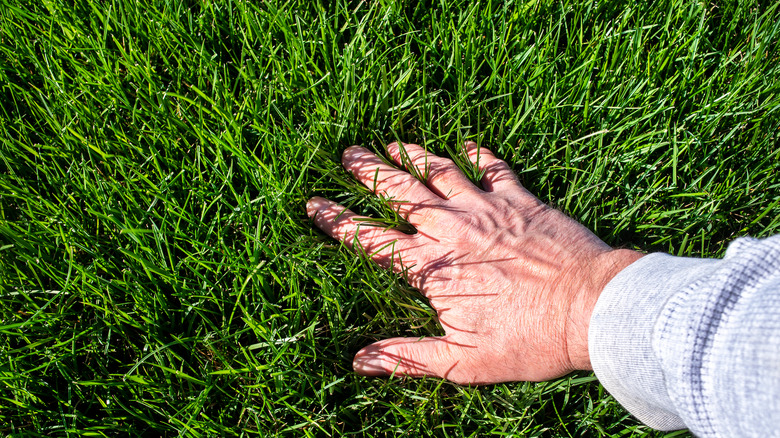For A Healthy Lawn, This Seed Variety Tip Is Essential
Are you struggling to get your lawn to grow? Or maybe you have a few brown patches that refuse to fill in no matter what you do? The answer might be simpler than you think: variety is the spice of life, and your lawn. This means that if you use one seed type on your lawn, you might be disappointed with the results. Instead, look for multiple seeds to plant. If you're unsure of what to use, you can often find grass seed that comes in a blend ideal for your climate and soil type.
You'll commonly find eight types of grass seed, including ryegrass, bermudagrass, and tall fescue. Instead of selecting just one, a blend is the key to a healthy, flourishing lawn. Your lawn's soil health also plays a role in how well your grass grows, so take this into consideration as you begin planting your lawn or repairing brown patches. Bear in mind that certain seed varieties do better in shade versus sun-drenched locations, so always check the label before planting.
Plant a mixture of seeds
When you stick to one type of seed, you're pigeonholing your lawn. If you have a particularly cold winter or experience a drought during the summer months, having one type of seed offers only limited protection for your lawn. If you plant a variety of seeds, however, you'll have protection against the elements and whatever else is thrown at your grass. This means that if one type of seed is more vulnerable than another, your stronger seeds will offset your weaker seed's shortcomings. Additionally, if your lawn encounters disease of some sort, a single type of seed might be susceptible, but a variety might weather the storm better.
Yes, you should consider your climate when choosing a seed blend, but a seed variety adds a layer of protection against extreme weather conditions, no matter what blend you settle for. And remember that, even for drought-resistant strains, you will always need to water appropriately.
Maintaining grass seed
Once you determine the best type of seed variety for your lawn, you need to maintain it, helping it take root. This means that the top layer of soil (an inch should do it) needs to stay moist. If you can't water your lawn due to work or other obligations, consider an automatic sprinkler that's set on a timer. Although it's tempting to cut your new lawn shortly after it begins to grow, especially if it's taller than your existing lawn, you'll want to hold off. But how long after planting grass seed can you mow? It's recommended to wait about four weeks before mowing.
If your grass still doesn't grow despite planting a variety of seeds, the problem might be your soil. If it's compacted, your grass roots aren't benefiting from the much-needed nutrients your soil provides. This is when you need to aerate your lawn, but you only need to do so once a year.


